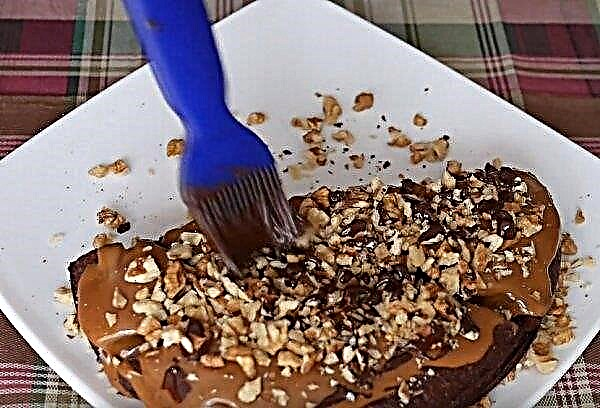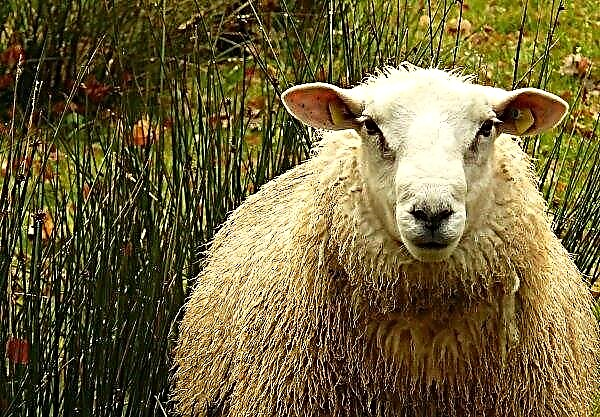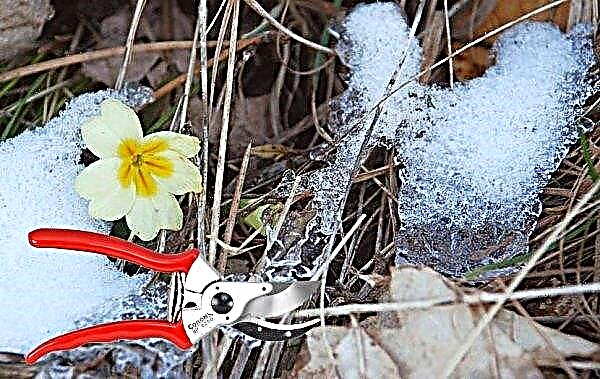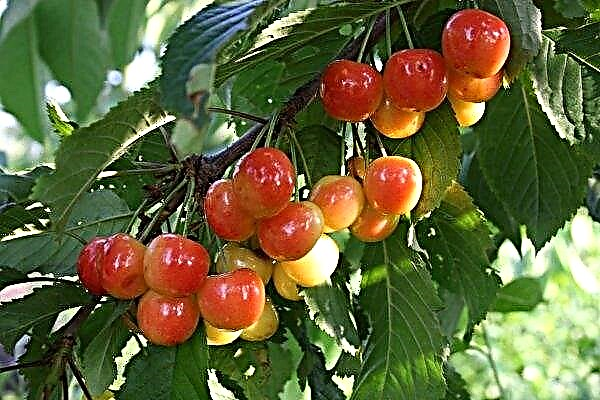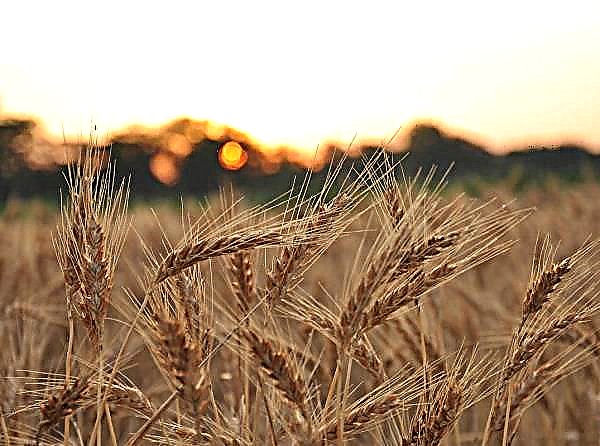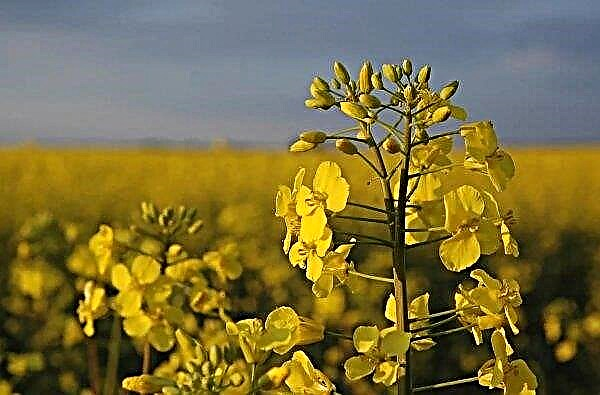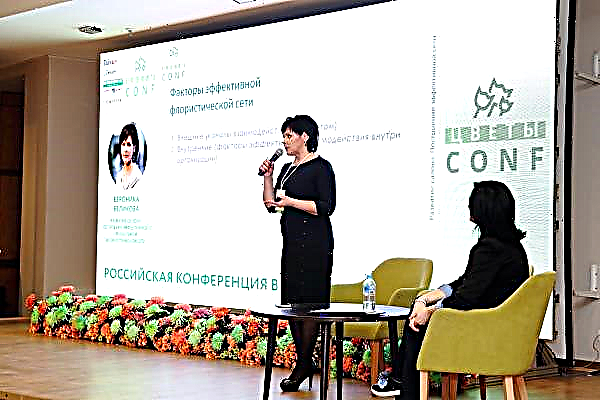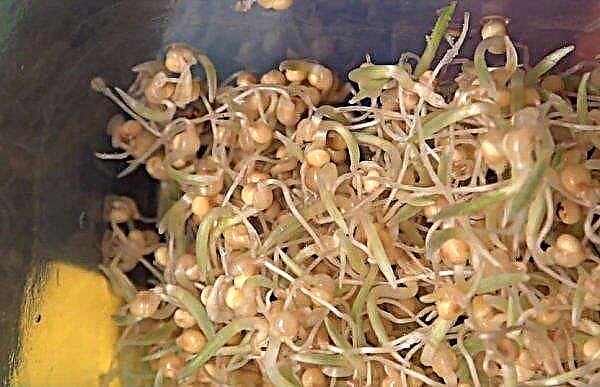Changeable aglaonema among connoisseurs of ornamental plants is very popular because it is characterized by excellent aesthetic qualities, unpretentiousness in cultivation and ease of care. With it, you can decorate the shaded areas of the apartment, as well as creatively design home greenhouses. What are the peculiarities of growing a culture and how to propagate it in an apartment environment, let's understand.
Description of indoor plant aglaonema changeable
Aglaonema is an evergreen perennial herbaceous culture of the Aroid family, the natural habitat of which is considered to be the tropical regions of Southeast Asia. In total, there are about fifty varieties of the flower, while several dozen are cultivated under the conditions of an apartment, among which the aglaonema is variable. The flower belongs to the medium-sized category, the height of which rarely reaches above 100 cm. Under natural conditions, the perennial can grow up to 1.5 m, grows in the Philippines.

The plant has erect stems on which lanceolate leaves of dark green color are located on long petioles with a silver border along the edges 25-30 cm long and up to 10 cm wide. It is the leaves that are considered the main pride of culture. Glossy, beautiful leaves form a dense and lush bush, which, thanks to its spectacular appearance, is able to decorate any office room or apartment.
Flowering culture falls on the summer period, but in the apartment it does not occur every season. The plant produces a peduncle, on which an inflorescence blossoms, resembling an ear of corn. Flowers - small, nondescript, yellow-green color. After flowering, small fruits are formed on the aglaoneem - round-shaped red berries, in the middle of each of which there is one seed.
Did you know? The juice of the described plant is poisonous and, if it enters the mucous membranes, can cause severe allergic reactions and intoxication of the body. That is why it is recommended to keep the flower away from children and pets.
Conditions for growing in the house
Home care for perennials is not particularly difficult, since it is not demanding on the living conditions and can grow well in a shaded place.
Location and Lighting
The culture prefers dim, diffused lighting, can also perfectly dwell in partial shade conditions. The ideal location of the flower will be the windowsill on the west and east side of the apartment. It should be remembered that for plants with variegated foliage, it is better not to choose too shaded places, since this will lead to a loss of brightness of the color of the foliage plate. At the same time, the flower should be protected from direct sunlight, as they can provoke burns on the leaves and protect it from drafts, which can cause the development of ailments.

Temperature mode
Variable aglaonema belongs to the category of heat-loving, therefore, in summer it is recommended to keep the flower with the plant at temperature indicators + 20 ... + 25 ° С, in winter it is enough to maintain the temperature at about + 16 ° С, but not lower. Optimum temperature indicators at any time for perennials are considered to be + 16 ... + 20 ° С.
It is very important to protect the flower from sudden jumps in temperature, the negative impact of which can provoke the development of various diseases, up to its death.
Air humidity
Since aglaonema is a native of the humid tropics, for its successful growth it needs an appropriate level of humidity. It is ideal to keep the plant indoors with a constant high level of humidity. With a moisture deficit, a regular spraying culture should be organized. This is especially true in the summer, when dry air prevails.
Important! Excessive dryness of the air causes yellowing of the sheet plates, their twisting and deformation.
To maintain the required humidity level, experts advise installing additional moisture sources near the flower pot: humidifiers, decorative fountains, water containers, etc. You can also place the container with the plant in a pallet with wet peat or pebbles, but in such a way that the bottom did not touch moisture.
Home Care
Caring for the aglaonema is quite simple and consists in carrying out a number of classic events: watering, feeding, pruning and transplanting.
Video: How to properly care for sinter
Watering technique
The plant needs frequent and plentiful moisture, the need for which can be easily determined by drying the upper layer of the substrate. Under natural conditions, the flower receives a portion of moisture daily, but at the same time it grows on light, air- and moisture-permeable soils, so when organizing home watering, you need to ensure that the water does not stagnate in the soil, as this can lead to rotting of the root system. Particular attention should be paid to the hydration of the flower during its growing season.
Perennial is poured under the root, after which, after 30 minutes, excess water is drained from the pan. For moisturizing, soft, settled water at room temperature should be used. With a decrease in temperature indicators in the room, the number of irrigations should be reduced.
We advise you to read about such a variety of this houseplant as aglaonema Maria.
The optimal moisturizing scheme is: in the summer - every 2-3 days, in the winter - once a week. However, it is recommended to water the culture, focusing on external factors: temperature, humidity, lighting. Excessive watering in a cool period of time, which can lead to its death, is considered harmful to a perennial.
Top dressing
In the growing season, which lasts from March to August, the plant requires regular top dressing with mineral fertilizers or organics. Nutrients are advised to be applied every two weeks, combining the procedure with watering. As fertilizers, you can use mineral preparations, which necessarily include phosphorus, potassium and nitrogen. Foliar top dressing has a positive effect on perennial growth. It is recommended in the summer season to spray the foliage of the culture every 2-3 days with light, weakly concentrated solutions.

Particular attention should be paid to the feeding process during the period of intensive perennial growth. At this time, it is necessary to apply liquid fertilizers, alternating the application of mineral preparations and organic products. In the winter dormant period, the frequency of fertilizer application must be reduced to once a month. A complete cessation of top dressing in winter is also allowed.
Pruning
As the perennial develops, its stems are gradually exposed and extended in length, which leads to the loss of an attractive appearance. To avoid this, regularly remove old, too elongated, dry or damaged shoots. All places of cuts should be processed with crushed charcoal.
In the spring, experts recommend radical pruning, which involves removing the top of the stem from old flowers. During the procedure, the top must be cut 15 cm below the leaves that remained on the trunk. The trimmed apex is advised to be rooted in water, and when root shoots appear, planted in a new container. Slices on the lower part of the perennial need to be treated with activated or charcoal, and for the plant itself to continue care according to the traditional scheme. A few weeks later, new shoots will appear from sleeping buds.
Did you know? From the Greek aglaonem (aglaia) translates as shine. The flower received this name due to its leathery shiny leaf plates, the length of which can reach up to 30 cm. It is strictly forbidden to treat the leaves of the plant with wax sprays designed to give shine.
Transfer
Aglaonema is characterized by slow growth rates, therefore, it needs regular transplants, which are carried out: for a young plant - annually, for a flower older than 3 years old - every 3-5 years. The plant gives an excellent growth of the root system if its root processes are limited by a small volume of the pot. Experts advise to choose a not too large and deep pot for a transplant, only 2-3 cm in diameter larger than the previous one.
Perennial transplantation activities must be carried out in the spring.

For this:
- A layer of drainage is poured into the prepared container using expanded clay or pebbles. The presence of a drainage layer is a prerequisite for plant transplantation, since it prevents stagnation of moisture in the soil.
- A nutrient substrate is poured on top of the drainage layer, the main components of which should be: sheet or sod land, peat and river sand. Before use, the substrate prepared at home is disinfected in any way possible.
- The plant is very careful, by the method of transshipment, it is removed from the old container, the root system is examined for damaged, dry or rotted processes, and the roots are partially freed from the soil.
- An elongated flower is planted in a new pot, sprinkled with soil, moisturized well.
The first feeding after transplantation of a perennial is recommended not earlier than after 4-6 months.
How to propagate a plant
In an apartment, flower growers practice several simple and effective methods of cultivating a tropical beauty: dividing a bush, cuttings and propagation by seeds.
Video: Methods of propagation of aglaonema
Bush division. The easiest and least time-consuming method of reproduction, which performed according to this algorithm:
- The plant is removed from the pot and the root system is cleaned of soil.
- Very carefully, using a well-sharpened, disinfected knife or secateurs, shoots together with root processes from the adult flower are separated.
- Seedlings are planted in a separate container with a nutrient substrate and covered with a plastic film.
- Indoors, the temperature is maintained within + 22 ... + 25 ° C, they provide dim lighting, regular moistening and spraying.
Important! The optimal time for the propagation of aglaonemes by dividing the bush is considered the first days of May.
Cuttings. It is considered one of the most common methods for breeding exotics. It is as follows:
- At the adult flower, the top of the stem is cut, the places of the cuts are treated with activated carbon.
- The top is cut into several parts of 8–9 cm so that each of them has several full sheets.
- Cuttings are planted to a depth of 5 cm in a moist substrate from the same parts of peat and sand.
- The container with seedlings is covered with a film or a plastic bottle.
- After 3-4 weeks, when the cuttings take root, the shelter is removed.

The seeds. Breeding perennials by the seed method is considered the most time-consuming and least effective, as it requires certain conditions and time. Seed material for planting can be bought in specialized markets or collected independently from a home plant. Seed germination is quite high, but they quickly lose quality during storage, which is why experts advise sowing fresh seeds as early as possible.
For this:
- Grains are washed well with warm water.
- Seeds are sown in a mixture of peat and sand mixed in equal proportions, deepening each grain by 2 cm.
- Seeds are covered with a substrate, the surface is moistened with a spray, covered with glass or plastic wrap.
- The container with crops is placed in a warm place with stable temperature indicators + 25 ° С.
When the first shoots appear, the shelter should be removed, and the seedlings should be provided with traditional care.
Growing difficulties
Despite the unpretentiousness and undemanding care, when growing a perennial, you may encounter a number of difficulties, which in most cases are associated with violations of the rules of agricultural technology of the flower:
- yellowing foliage - indicates excessive soil moisture, lack of lighting or low room temperatures;
- drying of sheet plates - the reason is dry air, lack of moisture in the soil;
- loss of leaf color intensity - may occur with insufficient lighting or lack of nutrients in the ground;
- yellow spots on leaf plates - is evidence of intense exposure to direct sunlight;
- slow flower growth and brown leaves around the edges - The reason may be the use of too hard, chlorinated water during irrigation.
Important! To reduce the hardness of the water for hydration, you can add a little citric acid.
In addition, a perennial can become a "victim" of a pest attack:
- spider mite - eats plant juice, forms a characteristic white web from the bottom of the leaf plate;
- thrips - white and then silver spots form on the leaves, the leaves die off later;
- whitefly - parasites live on the underside of the leaf, suck the juice from it, which leads to yellowing and drying out;
- aphids - eats juice of leaves and stems, provokes the development of soot fungus;
- mealybug - manifests itself in the form of cotton lumps in the sinuses, affects leaf plates that dry out and die.

Useful Growing Tips
To avoid many problems when growing aglaonema changeable novice growers will help simple recommendations of specialists:
- the plant is undemanding to temperature indicators and lighting, but it is extremely negative about the lack of moisture, so it is necessary to ensure a comfortable level of humidity;
- regular spraying of the foliage of the flower during the sultry period will create conditions close to the natural habitat of the perennial, as well as give the crown brightness, richness and luster;
- the frequency of crop fertilizers will be largely determined by the size of the tank: the smaller the pot, the more often fertilizers should be applied;
- It is strictly forbidden to allow sharp jumps in temperature in a room with a flower and the presence of cold drafts;
- aglaonema is very negative about tobacco smoke and instantly reacts to it with withering leaves.
 The amazingly beautiful aglaonema is volatile and can become an original decoration of a home or office interior. She is undemanding in care, not capricious, able to grow and develop in partial shade. Observing the simple rules of agricultural technology, you can easily and effortlessly get a lush, aesthetically attractive bush with large leaves of an unusual color.
The amazingly beautiful aglaonema is volatile and can become an original decoration of a home or office interior. She is undemanding in care, not capricious, able to grow and develop in partial shade. Observing the simple rules of agricultural technology, you can easily and effortlessly get a lush, aesthetically attractive bush with large leaves of an unusual color.

